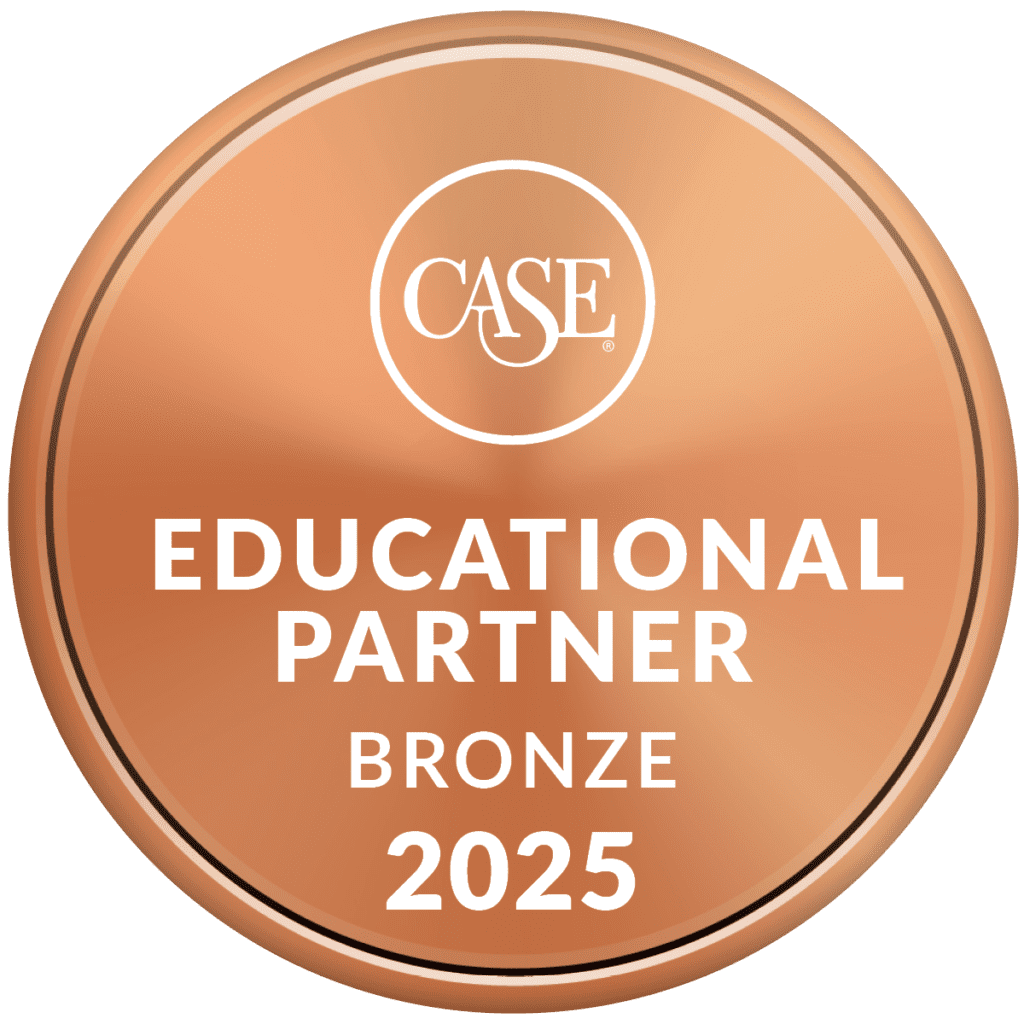
 From the Desk of
From the Desk of
Shelly Manuel | Associate Partner
I remember a time when I was ALWAYS the youngest development professional in the room. I have had the amazing fortune to find my way into this work in my early 20s and attain a leadership position by my late 20s. Now that I’m much further along in my career and nearing age 50, the pendulum has swung, and I find myself often older than many clients—particularly when working with junior staff.
I had a Gen-Z colleague, a digital native, who dreaded making actual phone calls to donors. It gave me pause to think: is she just not used to talking on the phone, or is she simply an introvert? In approaching this observation, should I consider extrovert versus introvert or generational differences?
Many articles have been written on the topic of which makes a better fundraiser: extrovert or introvert. I’ve found the consensus to fall into taking the “best from both worlds” through a team approach. But are there enough extroverts among Millennials or Gen-Z? Not only are these digital natives working in the field, but they are also donors. Research has shown that Millennials and Gen-Z are more likely to identify as introverted than prior generations. I have also found that I am more inclined to show introverted preferences than when I was younger. Perhaps the same factors affecting younger generations—like social media use, increasing technology use in communication, and general changes in social interactions—are impacting all of us.
As fundraisers and leaders, we need to be aware of how to capitalize on the best communication avenues available to foster meaningful donor interactions and build relationships. It all comes down to taking the time to gather information on prospects and using a multichannel approach to communication. While an email might reach some, a text could be far more effective with others. While a phone call may terrify a Gen-Zer, they are perfectly comfortable on Zoom or Teams. Strategic use of social media can be highly beneficial, but it might be completely overlooked by an older generation. So where do personal meetings fit in? The best way to ask will always be face-to-face, but the steps to get in front of some donors may increase to help them feel comfortable with the interaction.
Extroverts are still out there. They may be hiding behind technology, but they still crave personal interaction through special events and social gatherings. Now, more than ever, with so many different types of people and generations in our prospect pools, research and personalized approaches are critical. Thank heavens for technology putting this research in our pockets! And don’t forget to keep notes and accurate records; this will make that next interaction much easier to prepare for.
Independent Schools & Philanthropic Funds Data We’ve got new data in from some Independent School Associations. Let’s look closer at the Elementary School Heads Association participating schools rand what they raised in philanthropic funds for data entry year 2024-2025. School Count 80
Data from NAIS Facts at a Glance. |
Tips to Kickstart Monthly Giving
Especially now, in the current economic climate, monthly donors are among the most valuable supporters for nonprofits. They provide a reliable and steady source of income, often remain with an organization for several years, and have the potential to give larger amounts or even become legacy donors if managed well. Plus, at a time when many nonprofits are seeing an ongoing drop in small-dollar supporters amid increasing economic uncertainty, monthly giving is a smart way to bolster your group’s ability to weather turbulent financial times.
Here are tips to give your monthly giving program a boost.
Set up the systems and processes you’ll need.
Ensure you have technology available that can process recurring payments, whether it’s the same platform you use for all gifts or a tool integrated into your online donation form. You also need a donor database that allows you to separate these supporters from other types of donors and a system for managing their payments.
Find potential sustainers.
Examine your donor database. Individuals who have made multiple gifts in a year might be your best prospects for monthly giving, so invite them to contribute in this manner. While this approach works, it’s often slower than acquiring new donors who sign up for monthly giving from the beginning, whether you attract them through online outreach, canvassing, telemarketing, or another acquisition channel.
Promote monthly giving.
Highlight monthly giving to everyone in your orbit, including all the donors in your database — except those who are already sustainers — and to your followers on social media. Develop ways for people to choose monthly giving organically, such as adding that option to your online donation portal and to direct-mail appeals, while also actively seeking these supporters.
Ensure a positive experience for donors.
It’s important to provide excellent “customer service” to monthly supporters, including ensuring that your online giving platform allows them to easily cancel or change their gifts. Additionally, offer these donors a straightforward way to reach you if needed, such as an online contact form or a phone number.
Stay in touch.
Keep these donors informed about your work through communications such as impact reports and brief text-message updates. Offer ways to get involved beyond monthly giving, whether by signing a petition, attending an event, or volunteering. Consider using donors’ monthly receipts to express gratitude and provide an update on what their contributions help accomplish.
Don’t be afraid to ask for extra gifts.
Monthly donors enjoy contributing. Don’t hesitate to ask for additional gifts when you require them. COP, 5-2
How to Retain Skittish Donors
Donors rattled by stock market volatility and gloomy economic forecasts may be hesitant to give. But that doesn’t mean they won’t. Here is some advice on how to calm and retain skittish donors.
Keep Engaging Donors
It’s important to stay engaged with supporters, regardless of whether they are giving or not. Talk to your donors and find out what they think about the economic climate. Listen and respond accordingly. If donors are unnerved and pull back, be supportive.
Make a Plan
Nonprofits need to recognize that national and world events are moving quickly, so they should have a ‘changing landscape plan.’ Perhaps they could create a small team that includes a board member, the chief executive, a program chief, and a fundraiser to draft the plan as well as talking points to respond to donors’ questions.
Don’t Assume Everyone Is Hurting
Don’t assume that supporters are troubled by economic turmoil. Some donors might be in a good place, which makes keeping in touch very important to understand where donors stand. Is it time to ask this donor for a big gift? Or should I pull back?
Challenges as Opportunities
If you are seeing an increase in the number of donors with tight budgets, you might consider how to leverage those who aren’t economically stretched. For instance, working with your strongest donors to convert their donations into matching campaigns can be a great way to add urgency and appeal to your 2025 fundraising. COP, 4-25
We Know Independent Schools
For more than 35 years, Alexander Haas has been a fixture in the nonprofit community. We are honored to have worked with so many remarkable independent schools, both secular and non-secular, across the country that help mold today’s adolescents into tomorrow’s leaders. Take a look at our list of independent school clients, past and present.
A Fresh Approach to Fundraising
Our services aren’t cookie cutter. We don’t operate with a boilerplate, merely changing names and locations. We craft each and every service we provide to match your organization’s unique needs, wants and abilities. We work hard and expect you to do the same. Together we can help you transform your institution, your fundraising, and the community you serve.
Whether your need is in Capital Campaign, Annual Fund Campaign, Major Gifts, Leadership Annual Giving, Planned Giving or all of the above, we take a fresh approach to nonprofit fundraising.


